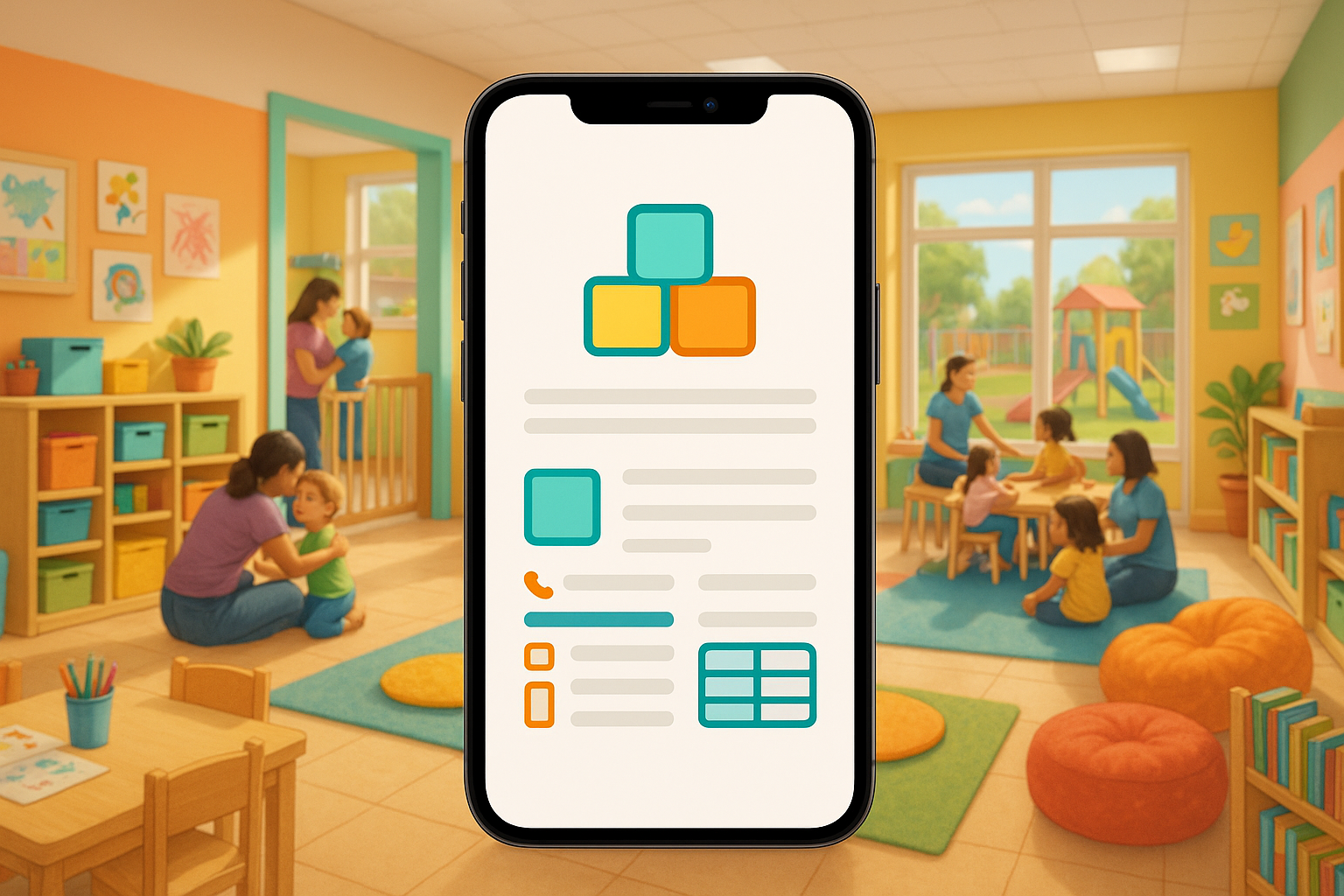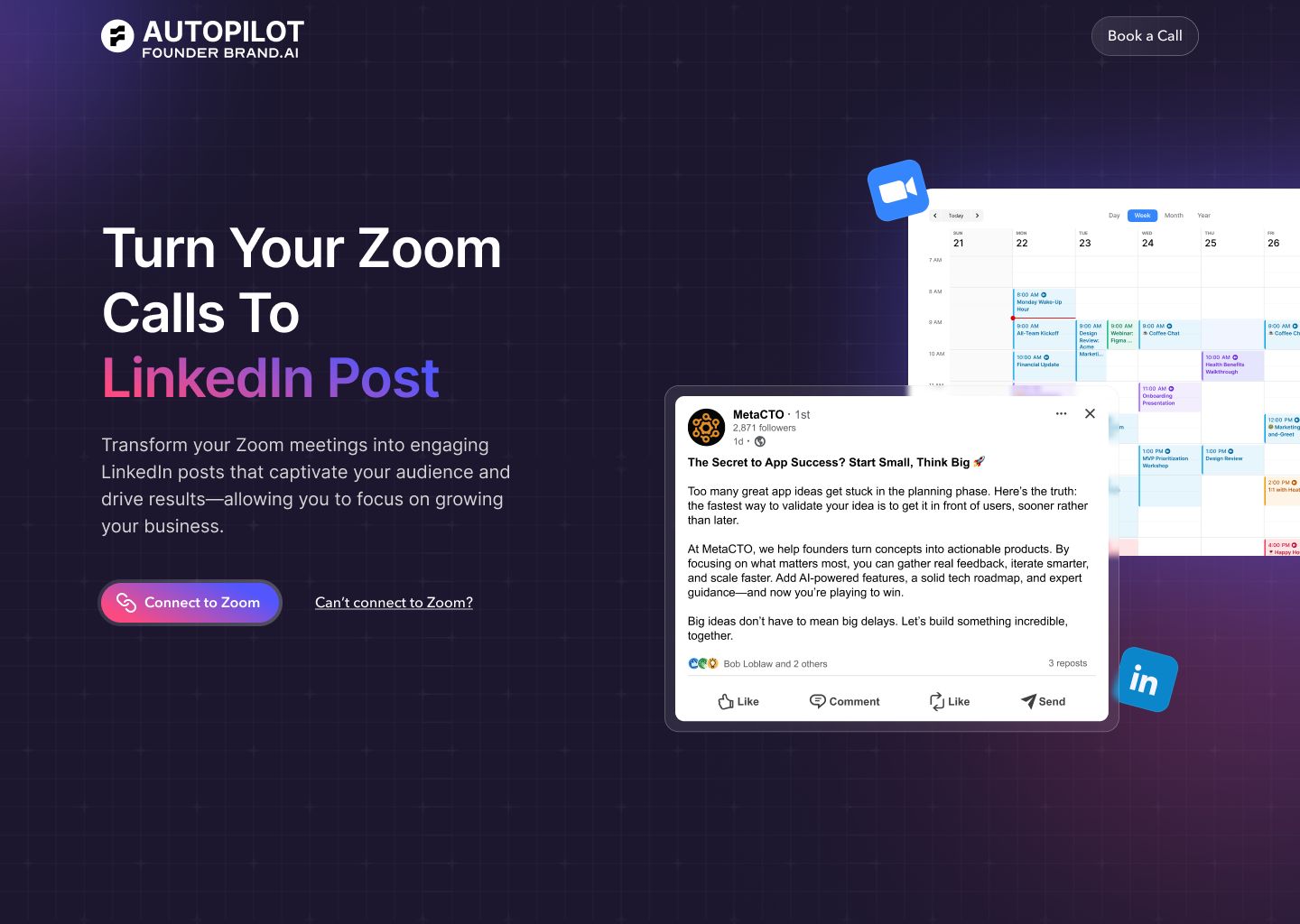In today’s data-driven world, the ability to efficiently store, manage, and retrieve information is not just an advantage; it’s a necessity. Businesses are generating data at an unprecedented rate, and harnessing this data is the key to unlocking actionable insights, automating processes, and delivering superior user experiences. However, building a robust, scalable, and secure database application is a complex undertaking fraught with technical challenges that can overwhelm even experienced in-house teams. The journey from concept to a fully functional database app requires deep expertise in architecture, security, performance optimization, and integration.
This article serves as a comprehensive guide to database application development. We will explore the fundamental definition of a database application, dissect the significant difficulties of building one in-house, and examine the various types of database systems you can leverage. Furthermore, we will provide a realistic look at development costs and introduce the top companies and platforms that facilitate database app creation. As a leading US AI-powered mobile app development firm, we at MetaCTO have over two decades of experience transforming complex data challenges into elegant, high-performance applications. We specialize in not only building standalone database solutions but also seamlessly integrating them into mobile apps, ensuring your data is powerful, accessible, and secure, no matter the platform.
What is a Database App?
At its core, a database application is a software program specifically designed to interact with a database. Its primary functions are to store, retrieve, and manage data in an efficient and organized manner. Think of it as the intelligent interface between your users and your data. While a simple spreadsheet can store data, a database application transcends basic storage. It is architected to handle complex data relationships, automate intricate business processes, and ultimately provide actionable insights that drive decision-making.
A well-designed database application serves as the backbone of countless business operations. From customer relationship management (CRM) systems and inventory management to financial reporting and e-commerce platforms, these applications are the engines that power modern enterprise. They ensure that critical business data is not only stored securely against unauthorized access but is also readily accessible and genuinely useful to the people and systems that rely on it. Without a proper database application, data becomes a siloed, unmanageable liability rather than a strategic asset.
Reasons It Is Difficult to Develop a Database App In-House
Embarking on in-house database application development can seem like a cost-effective path, but it is paved with significant challenges that can lead to project delays, budget overruns, and ultimately, a subpar product. The complexities involved often extend far beyond simple coding and require a level of specialized expertise that many organizations lack internally.
Overwhelming Data Volume and Growth
The sheer volume of data is a formidable opponent. According to industry reports, the amount of data and information created is increasing by about 19 percent each year, with some analysts reporting storage growth figures far in excess of that, sometimes reaching 30 percent or more annually. This exponential growth can quickly overwhelm traditional storage solutions. Greg Johnson, an Executive Director at JP Morgan Chase, noted that his organization “hit the wall and were unable to keep up with traditional storage.” When your data outpaces your infrastructure, performance grinds to a halt, and scalability becomes a nightmare.
The Burden of Maintenance and Complexity
Managing a database is a continuous, resource-intensive effort. Database administrators (DBAs) spend, on average, a staggering 90 percent of their time on routine maintenance tasks. As data sources multiply, the processes that support them grow in tandem, leading to a complex web of dependencies that makes management a chore. DBAs are left wrestling with this complexity, often struggling to discover the storage bottlenecks or other hidden issues that are inhibiting database operations. This constant firefighting leaves little time for strategic initiatives or performance optimization.
Data Protection, Availability, and Disaster Recovery
For any business, data is a critical asset that must be protected. Ensuring data protection, planning for disaster recovery, and maintaining high availability are persistent and pressing issues for DBAs. The stakes are incredibly high; 80 percent of data center managers and operators have experienced some type of outage in the past three years. An outage can mean lost revenue, damaged reputation, and a complete halt to business operations. Building a resilient system that can withstand hardware failure, software bugs, or cyberattacks requires meticulous planning and deep architectural knowledge.
Lack of Visibility and Tools
A significant challenge lies in the traditional disconnect between application developers, database personnel, and storage administrators. As noted by industry expert Andrew Sillifant, database personnel often have “no idea what is happening in the storage layer if database queries are running slowly.” This lack of insight into each other’s worlds creates a blame game where problems are difficult to diagnose and resolve. Furthermore, with the rise of modern architectures like containers, new problems in monitoring data and sharing information emerge. Teams need sophisticated tools to measure and manage their containerized assets and databases, tools they may not have the budget or expertise to implement.
Compliance and Data Governance
In our globalized economy, data rarely stays in one place. Organizations that handle international data or operate in specific geographies like the European Union (GDPR), California (CCPA), or New Zealand must navigate a complex web of regulations. Data residency, sovereignty, and localization have become more important than ever. DBAs must pay close attention to where data is physically stored and where it is going to ensure it is not placed at risk by being shared across borders in violation of these laws. This adds a significant layer of legal and technical complexity to any project.
Protracted Setup and Migration Timelines
Finally, the time investment required is often underestimated. When huge amounts of storage are involved, it can take anywhere from six to 24 months just to set up and configure the complex server architectures and cloud-native services required. Moreover, migrating data from one database, server, or cloud provider to another often eats up an enormous amount of time. These long migration delays, especially when large volumes of data are involved, can bring innovation to a standstill and tie up critical resources for months on end.
Different Types of Database Apps
Database applications are not a one-size-fits-all solution. They are built upon different types of underlying database management systems (DBMS), each with its own structure, strengths, and ideal use cases. Understanding these categories is crucial for selecting the right foundation for your application.
Relational Databases (SQL)
Relational databases, which use Structured Query Language (SQL), have been the industry standard for decades. They organize data into tables with predefined schemas, rows, and columns. Data in different tables can be linked through relationships using primary and foreign keys, which ensures data integrity and consistency.
- Examples: Microsoft SQL Server, MySQL, PostgreSQL, Oracle Database.
- Best For: Applications that require strong consistency and have structured data with clear relationships, such as financial systems, e-commerce platforms, and transactional applications.
NoSQL Databases
NoSQL databases emerged to handle the challenges of big data, offering more flexibility and scalability than traditional relational models. The term “NoSQL” typically means “not only SQL.” These databases can store unstructured or semi-structured data and are often designed to scale horizontally across many servers.
- Examples: MongoDB, Cassandra.
- Best For: Applications with large volumes of rapidly changing or unstructured data, such as social media feeds, IoT sensor data, and real-time analytics.
Document-Based Databases
A popular category of NoSQL databases, document-based databases store data in documents, typically in formats like JSON or BSON. Each document is a self-contained unit of information, which can be nested and complex. This model is intuitive for developers, as it often maps directly to objects in their application code.
- Examples: CouchDB, Firebase Realtime Database, MongoDB.
- Best For: Content management systems, mobile app backends, and any application where data for a single entity is best kept together in a flexible, schema-less format.
Cloud-Based Databases
These are not a separate type of database model but rather a deployment model. A cloud-based database is a database that runs on a cloud computing platform, offered as a managed service (Database-as-a-Service or DBaaS). This absolves organizations of the need to manage physical hardware and infrastructure. Any of the above database types (SQL, NoSQL, etc.) can be deployed as a cloud-based database.
- Examples: Amazon RDS (Relational Database Service), Google Cloud SQL, Microsoft Azure SQL Database.
- Best For: Businesses of all sizes that want to reduce operational overhead, achieve high availability and scalability, and pay for resources on a flexible, as-needed basis.
Cost Estimate for Developing a Database App
Determining the cost of building a custom database application is complex, as it depends on a multitude of factors. There is no single price tag; the final investment can range from a few thousand dollars for a simple database to tens of thousands or more for a complex, enterprise-grade system.
The primary factors that influence the cost of database design and development include:
- Scope and Information Volume: How much information do you need to store? A database for a small business’s customer list is vastly different from one managing a global supply chain.
- User Base: The number of concurrent users who will access the information directly impacts the required architecture, performance tuning, and hardware.
- Customization and Functionality: The degree of custom features, automated workflows, reporting dashboards, and integration with other systems is a major cost driver.
Database projects are typically priced in one of two ways: by the hour or on a per-project basis. In addition to the core development work, you may also be responsible for other costs, including:
- A design schematic fee
- Analysis of an existing database
- Hardware upgrades or cloud hosting fees
- Software licenses
- Ongoing customer support and maintenance
- User and administrator training
To provide a clearer picture of the potential cost spectrum, here are some real-world project examples reported by users of BuyerZone:
| Project Description | Location | Cost |
|---|---|---|
| MS Access database converted from an MS Excel spreadsheet | Bay Shore, NY | $600 |
| Flat project fee for an IT Manager | Hopkinton, MA | $2,000 |
| Building a database and integrating it into a website | El Cajon, CA | $3,100 |
| Creation of an Access Database for a non-profit | Washington, DC | $3,900 |
| Flash scripting, database design, e-commerce, and development | St. Louis, MO | $5,000 |
| Database-driven real estate website | Washington, UT | $10,000 |
| Creation of a database, brand development, and marketing | Chicago, IL | Approx. $13,000 |
| Database design, analysis, and hardware | Chelmsford, MA | Approx. $70,000 |
As these examples illustrate, the investment is directly tied to the project’s complexity and scope. A simple conversion is relatively inexpensive, while a comprehensive solution involving hardware and strategic analysis represents a much larger financial commitment.
Top Database App Development Companies and Platforms
When you decide to build a database application, you can either partner with a development agency that builds a custom solution for you or use an online database builder platform. The right choice depends on your technical expertise, project complexity, and long-term goals.
1. MetaCTO
As a premier AI-powered mobile app development agency, we don’t just build apps; we build businesses. We specialize in creating custom, scalable, and secure database applications that serve as the foundation for high-growth mobile and web products. With over 20 years of experience and more than 120 successful projects, we guide our partners through every stage of the development lifecycle—from validating an idea with a rapid MVP to building, growing, and monetizing a market-ready app.
The Unique Challenge of Mobile Database Integration
Integrating a database with a mobile app introduces a unique set of challenges that go beyond typical web development. Mobile users expect a fast, seamless experience, regardless of their network conditions. This is where our expertise becomes critical.
- Offline Data Synchronization: Mobile apps must function even with sporadic or no connectivity. The real challenge is ensuring that any data created or modified offline is seamlessly and correctly synchronized once the device reestablishes a network connection. This involves sophisticated conflict resolution logic, especially when multiple users might be changing the same data.
- Device Resource Limitations: Mobile devices have confined CPU, memory, and storage. A resource-intensive data integration process can introduce lag, drain the battery, and lead to a poor user experience, potentially causing users to abandon the app altogether.
- Security on Volatile Networks: Mobile apps often connect through insecure public Wi-Fi or unreliable cellular networks. The challenge isn’t just about encrypting data at rest but ensuring that the encrypted data is transmitted safely over these volatile networks.
- Data Format Diversity: Mobile applications often need to pull data from a plethora of sources, from JSON data via RESTful APIs to XML feeds from legacy systems and binary data from device sensors. Integrating this eclectic blend of formats into a single, cohesive app is a significant technical hurdle.
Hiring an expert agency like MetaCTO mitigates these risks. We have the deep technical experience to architect robust offline-sync capabilities, optimize performance for constrained devices, implement end-to-end encryption, and build middleware to handle disparate data formats. We ensure your mobile app’s database is not an afterthought but a core component built for performance and reliability.
Online Database Builders
For teams looking to build applications themselves, several powerful online database builders are available. These platforms offer integrated databases and application development features, allowing users to create and deploy web apps. They range from no-code solutions for business users to low-code environments for experienced developers.
All five of the following leading platforms provide access to a powerful online database, allow data import from CSV files, and include features to develop and deploy web applications on their integrated database. However, they differ significantly in their target audience, underlying technology, and pricing models.
| Platform | Target User | Database | Approach |
|---|---|---|---|
| Five | Developers, DBAs | MySQL (Open-Source) | Low-Code |
| Caspio | Business Users | MS SQL Server (Proprietary) | No-Code |
| Knack | Non-Engineers | MongoDB/Solr (Proprietary) | No-Code |
| Zoho Creator | Developers | Proprietary RDBMS | Low-Code / Full-Code |
| Retool | Developers | PostgreSQL (Open-Source) | Low-Code |
Five
Five is a low-code development environment designed for developers, DBAs, or anyone knowledgeable in SQL. It lets users rapidly build and deploy custom online database applications that run on a standard MySQL database. Because it uses an open-source RDBMS, data remains portable. Five closely resembles a professional IDE and offers full code extensibility using standard languages like SQL, JavaScript, and TypeScript. While it offers a free tier for local development and has no limits on storage, end-users, or data records, it does have a learning curve, especially for non-developers. It is not the right choice for projects requiring a heavily customized user interface.
Caspio
Caspio is a no-code online database builder aimed at tech-savvy business users who are advanced with tools like Microsoft Excel or Access. In fact, Caspio is often thought of as “Microsoft Access in the cloud.” Applications built with Caspio run on a hosted Microsoft SQL Server database. It is best suited for creating web widgets (called data pages) that can be embedded into other websites. This point-and-click builder is great for users new to application development who want to work in a purely visual way. However, its pricing is complex and imposes multiple limits on things like data records, which can force you into a more expensive plan as you grow.
Knack
Knack is a user-friendly, no-code database builder designed for people new to application development. It allows non-engineers to build online databases for web applications using a drag-and-drop interface. Applications run on a proprietary database using MongoDB and Solr, which manages data relationships differently from a traditional relational database. While this makes it very easy to use, it creates significant vendor lock-in. Any changes made to a Knack application are pushed directly to production, as there are no separate development or sandbox environments. Its pricing model also imposes a limit on database records.
Zoho Creator
Zoho Creator is a comprehensive online application development environment best used by experienced developers and enterprise teams. It offers a robust set of features to manage the entire software development lifecycle (SDLC), such as versioning and release management. While it promotes itself as a no-code solution, its real power lies in its extensibility with full code using Deluge, a proprietary scripting language. This creates a steep learning curve for both coders and non-coders, as Deluge has little use outside the Zoho ecosystem. Zoho uses a proprietary relational database, which increases vendor lock-in, and its pricing is based on the number of end-users with additional limits on records and storage.
Retool
Retool is a developer-focused low-code environment for rapidly building internal tools. Applications run on a PostgreSQL database, a powerful open-source RDBMS, ensuring data remains portable. Retool excels with its comprehensive, drag-and-drop component library and out-of-the-box integrations, which allow developers to speed up development significantly. However, its learning curve is quite steep for anyone not familiar with writing JavaScript and SQL. Its pricing model, which charges per end-user, can get very expensive, making it prohibitively costly for applications with external users.
Conclusion
Developing a database application is a foundational step for any business looking to leverage its data effectively. As we’ve seen, this process involves navigating a host of challenges, from managing explosive data growth and ensuring high availability to complying with complex regulations and overcoming the unique hurdles of mobile integration. The cost and complexity can vary dramatically, and the choice of tools and partners will fundamentally shape the outcome of your project.
Whether you choose to utilize a no-code platform for a simple internal tool or a low-code environment for a more complex application, understanding the trade-offs between ease of use, flexibility, and vendor lock-in is paramount. For businesses seeking a truly custom, scalable, and high-performance solution, particularly one involving a mobile app, partnering with a specialized development agency is the most effective path forward.
At MetaCTO, we have spent two decades building the expertise needed to tackle these exact challenges. We transform your vision into a robust application that not only meets your current needs but is also architected to evolve with your business. If you’re ready to build a powerful database application and integrate it seamlessly into your product, we invite you to talk with an expert on our team. Let’s build your app the right way, from day one.






